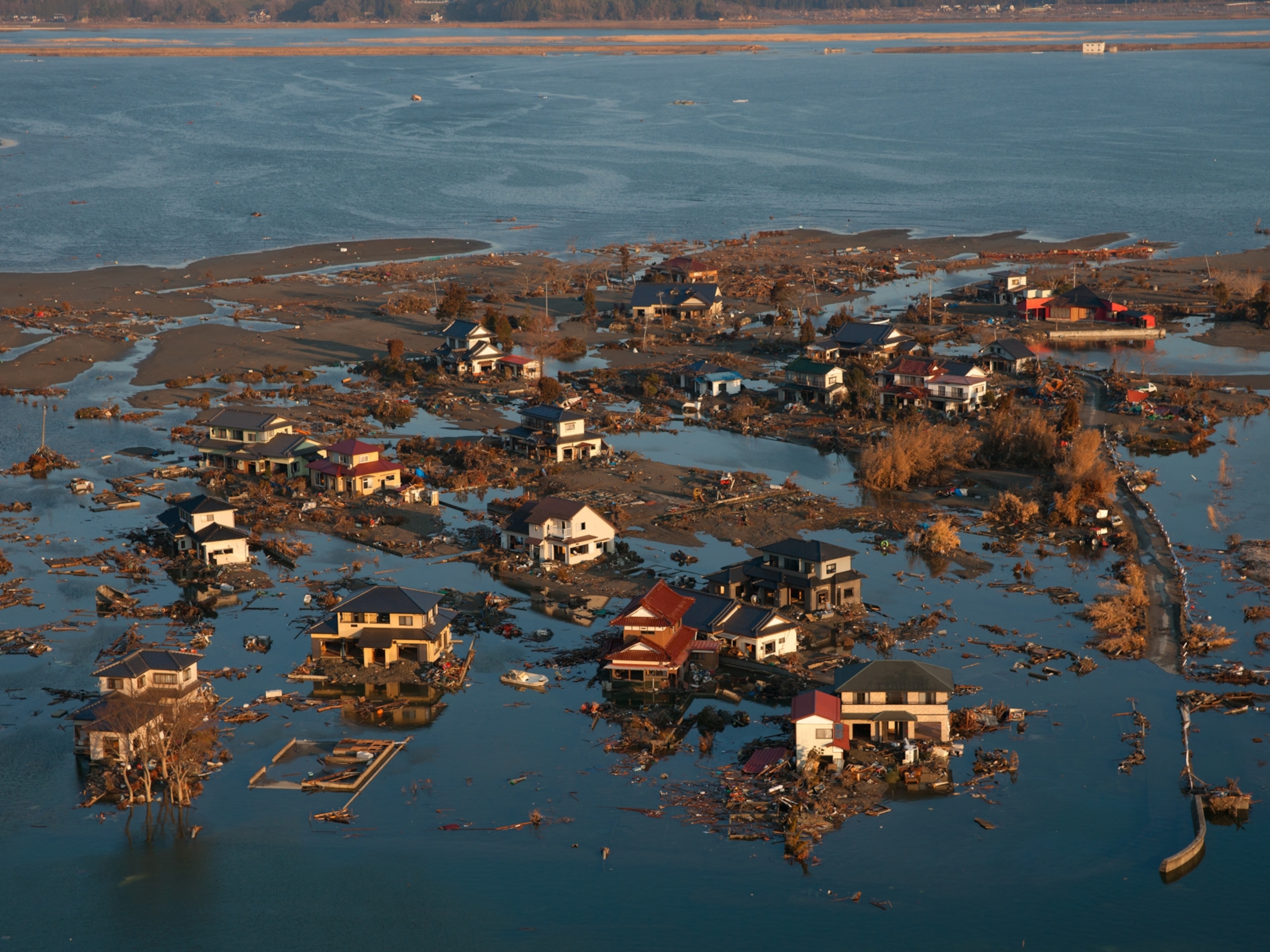
Scientists Debate Evidence of Ancient Megatsunami
Giant tsunamis may have helped to shape the world around us today.
For nearly a decade, geologist Dallas Abbott and her colleagues have been trying to prove that an enormous space rock, possibly an asteroid, smashed into the Indian Ocean about 10,000 years ago and created a megatsunami, a set of giant waves that washed over the east coast of Africa. Such a tsunami could have created waves as high as 300 feet (91 meters)—three times larger than the Indian Ocean tsunami in 2004 that left 230,000 dead.
The proof, Abbott contends, lies in sandy wedge-shaped features called chevrons in Madagascar, as well as what might be a deep ocean crater between Madagascar and Australia. The idea is that either a huge impact, or a large landslide from a volcano on the island Réunion, sparked the tsunami that created the chevrons.
Now, Abbott and an international team of researchers have presented further evidence to back up their theory: a geochemical fingerprint from Madagascar that firms up the date for the massive tsunami.
The study of ancient megatsunamis has been controversial, though; not only is it hard to detect evidence that literally washes away, but also to establish proof of a tsunami's cause—such as an impact or earthquake—occurring at the same time.
In October, for instance, another team explained the mysterious presence of huge boulders high on Santiago Island by suggesting that an 885-foot (270 meters) megatsunami washed the boulders to their perch 73,000 years ago. In that case, the scientists looked for evidence that part of a steep volcano collapsed and created the tsunami.
At stake for scientists is not only whether places like Madagascar were hit by megatsunamis in the past, but also just how common these events have been since the end of the last ice age. Abbott and other scientists want to understand just how big tsunamis can get, and which regions may be most vulnerable to them.
Hunting the Past
Abbott's new data, presented in December at an American Geophysical Union meeting in San Francisco, showed high levels of carbonate in 22 samples taken from two of the dunes. The researchers dated the carbonate in the sand—which mostly came from marine microfossils from the ocean—and concluded it was around 10,000 years old.
“First of all, we find these deposits at the top of a 175-meter-high (574 feet) cliff,” said Abbott, a geologist at Columbia University’s Lamont-Doherty Earth Observatory in New York. “Just for the wave to make it up there, it had to be on the order of 90 meters (295 feet) high. So, it was a big wave … I think it bolsters our theory.”
Several tsunami experts have disputed the megatsunami theory since it first got attention in 2006 with an article in the New York Times.
They remain unconvinced by her new evidence, saying that many chevrons are dominated by carbonate sand and that the latest evidence can't rule out local sand as a source of the dunes.
“I have no reason to reconsider our analysis. The evidence presented is unconvincing for a mega-tsunami hypothesis,” said Joanne Bourgeois, a sedimentary geologist at the University of Washington.
Bourgeois coauthored a 2009 paper in the journal Geology arguing it was wind, not a tsunami, that produced the chevrons in Madagascar. A 2008 study concluded the chevrons in question lined up precisely with the dominant wind direction. “In fact, none of the new results require any kind of catastrophic event or extraterrestrial intervention. Just wind blowing over the beach,” said that study's coauthor, Nicholas Pinter of the University of California, Davis.
Abbott countered that wind could not explain how such old fossils managed to reach the chevrons intact.
“If these fossils were transported by the wind, they should have been powder after 10 kilometers (6.21 miles) of transport,” she said. What's more, she said, the sand tests as about 10,000 years old. “It’s too old to be modern, wind-blown sand,” she said.
Abbott and her colleagues now plan to amass further evidence. They hope to test boulders that would have been torn loose from the cliff edge by the tsunami, and are toying with the idea of putting chevron samples through a wind tunnel, to demonstrate they couldn’t have been transported there by wind.
Abbott acknowledged it still may not be enough to win over her critics, noting the experience of Walter Alverez and his supporters, who proposed that an asteroid caused the mass extinction of dinosaurs 65 million years ago.
“Most of the people who are against [the megatsunami theory] are never going to be convinced no matter how much data I bring to the table. That is how it is in science.”





